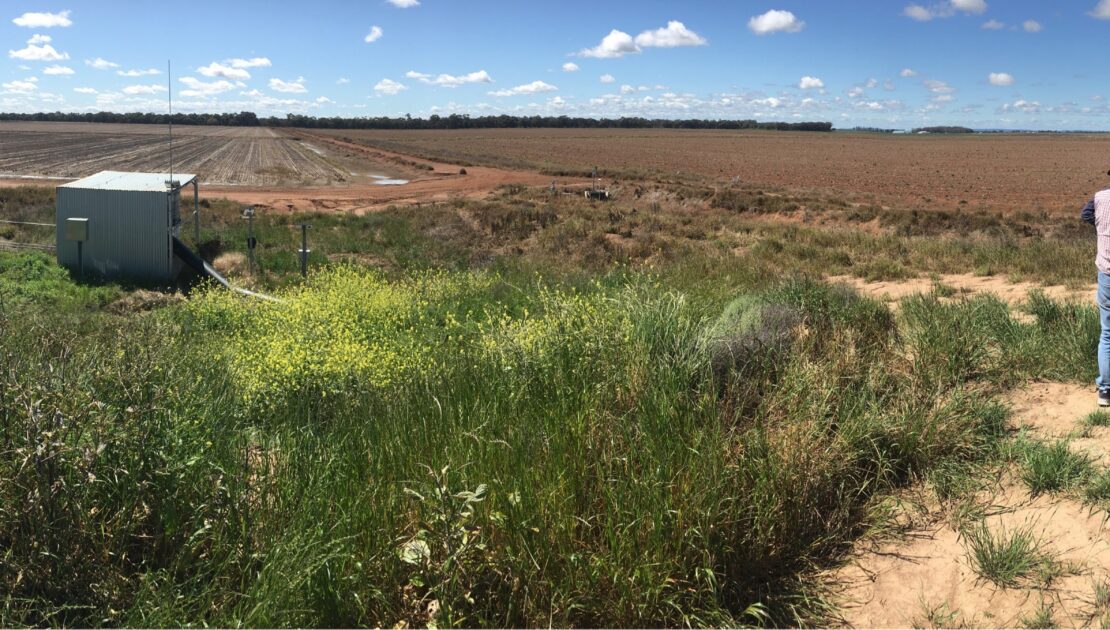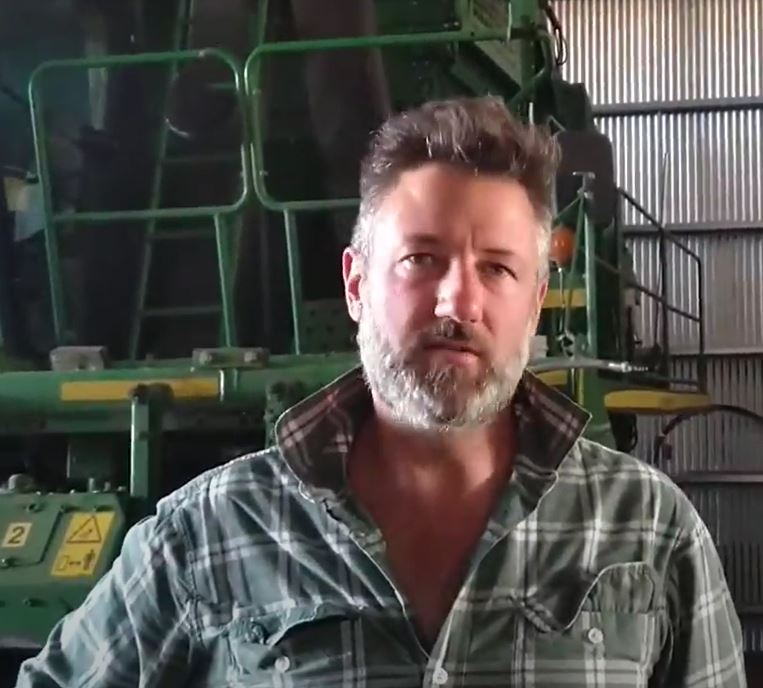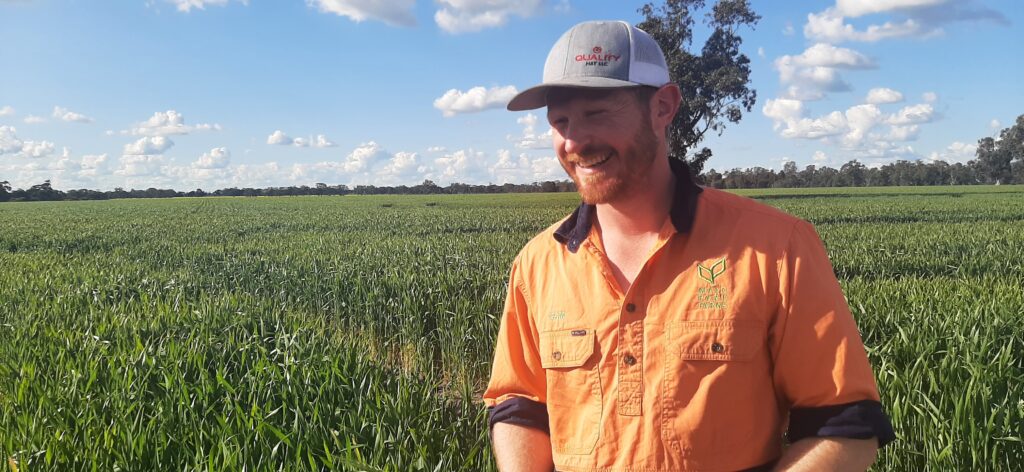Smart Irrigation: Revolutionizing Farming with Satellite Observations

Smart Irrigation: Revolutionizing Farming with Satellite Observations
- June 20, 2023
- Antonio Gnassi
- Blog
- No Comments
Premise:
In this post we imagined a conversation between three farmers: Cameron Taylor, Rodney Pohlner and Gavin Del Broi. The conversation is the fruit of our imagination but the contents are taken from three interviews with three farmers. The interviews were carried out in different places and times. Here’s what came of it.
In the ever-evolving field of agriculture, technology continues to play a crucial role in optimizing farming practices. One such technological advancement is smart irrigation, powered by satellite observations. In a recent conversation among three experienced farmers – Gavin Del Broi, Rodney Pohlner, and Cameron Taylor – the transformative potential of satellite data in understanding crop dynamics, making informed decisions, and enhancing overall productivity was brought to light. This blog post explores their insights and experiences, showcasing the invaluable role of smart irrigation in modern agriculture.
Harnessing the Power of Satellite Data:
The conversation begins with Cameron Taylor emphasizing the importance of using satellite observations, particularly the Normalized Difference Vegetation Index (NDVI), as a validation tool. By comparing the NDVI data with actual field conditions during harvest time, farmers can gain valuable insights into the factors influencing crop yield. This data serves as a reference point for making informed decisions in subsequent years, leading to improved agricultural practices and better outcomes.
Overcoming Challenges and Maximizing Benefits:
Rodney Pohlner highlights the usefulness of satellite data in making critical decisions based on field conditions. Previously, hiring planes for aerial photography was time-consuming and weather-dependent. However, with satellite imagery, farmers now have access to consistent and reliable reference data. While challenges such as cloud cover persist, the farmers express the need for more frequent and timely satellite images to optimize decision-making throughout the season.

Optimizing Nitrogen Management:
Gavin Del Broi brings attention to the significance of nitrogen management in farming. By using satellite data and conducting soil tests, farmers can identify variations in nutrient requirements across different paddocks. The NDVI, combined with nitrogen strip trials, helps farmers monitor and adjust fertilization strategies in real-time. This integration of satellite observations and on-ground testing provides a quantitative source of information, surpassing the limitations of traditional soil testing methods.
Visualizing Impact and Predictive Models:
The conversation delves into the practical benefits of satellite observations, including the ability to visualize the impact of farming actions in real-time. Farmers can use satellite imagery on their phones or monitors during harvest time, allowing them to witness the effects of their efforts firsthand. Moreover, the discussion touches on the potential of advanced analytics and predictive models for early-season yield forecasts. Although the complexity of such models is acknowledged, the accuracy of satellite-based yield predictions surpasses farmers’ estimations, making them an invaluable tool for proactive decision-making.

Understanding Climate Drivers:
Recognizing the influence of climate drivers on farming practices, Rodney Pohlner introduces the concept of the Indian Ocean anomaly as a predictor of seasonal conditions. The conversation highlights the importance of simplifying technical information about climate drivers to help farmers comprehend their impact on farming practices. By staying informed and adapting to changing climate patterns, farmers can mitigate risks and make more informed decisions.
Conclusion:
The conversation among Gavin Del Broi, Rodney Pohlner, and Cameron Taylor underscores the pivotal role of satellite observations in modern agriculture. Smart irrigation, driven by satellite data, empowers farmers to optimize their farming practices, conserve resources, and maximize yields. Despite challenges such as cloud cover, advancements in satellite technology offer promising solutions for capturing timely and cloud-free images.
As agriculture continues to evolve, satellite observations prove to be indispensable tools for informed decision-making. By leveraging the power of satellite data, farmers can navigate uncertainties, enhance sustainability, and contribute to efficient agricultural systems. The transformative potential of smart irrigation through satellite observations is evident, paving the way for productive, sustainable, and resilient farming practices.
Embracing Collaborative Solutions:
The conversation concludes with a discussion on the collaborative nature of smart irrigation. Farmers and large irrigation companies can work together by sharing forward-casting irrigation schedules based on satellite data. This proactive approach allows for efficient water management and ensures the entire system can handle any potential issues. By leveraging the collective knowledge and insights provided by satellite observations, farmers and irrigation companies can optimize water usage and contribute to sustainable agricultural practices.
Looking Ahead:
The insights shared by Gavin Del Broi, Rodney Pohlner, and Cameron Taylor highlight the immense potential of smart irrigation powered by satellite observations. As technology continues to advance and satellite data becomes more accessible, the benefits for farmers are poised to expand further. The integration of satellite observations, predictive models, and collaborative efforts holds the key to a more resilient and productive agricultural sector.

Can see the future:
Smart irrigation driven by satellite observations is revolutionizing the way farmers approach their agricultural practices. The conversation among Gavin Del Broi, Rodney Pohlner, and Cameron Taylor sheds light on the transformative power of satellite data in understanding crop dynamics, making informed decisions, and maximizing productivity. By embracing smart irrigation, farmers can optimize resource management, adapt to changing climate patterns, and enhance overall agricultural sustainability.
Satellite observations provide a wealth of information that empowers farmers to take proactive steps, adjust strategies, and make informed decisions throughout the farming season. Despite challenges such as cloud cover and the need for more frequent updates, satellite technology offers a reliable and consistent source of data that enhances agricultural practices. By embracing the collaborative potential of satellite observations, farmers and irrigation companies can work together to optimize water management and ensure the resilience of agricultural systems.
As we move forward, the integration of satellite observations, advanced analytics, and predictive models holds immense promise for the agricultural sector. By harnessing the power of smart irrigation, farmers can navigate uncertainties, mitigate risks, and contribute to a sustainable and productive future for agriculture.
